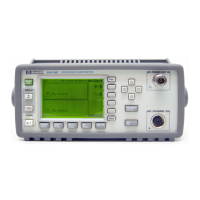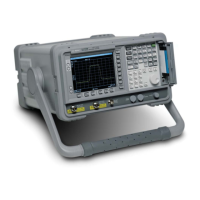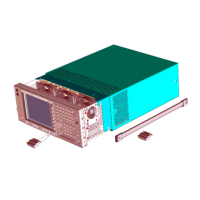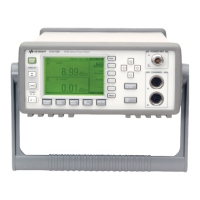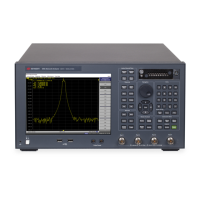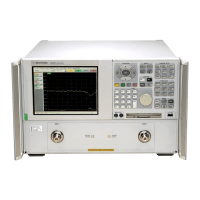88 Chapter 7
Characteristics
SRL Measurement Uncertainty vs System Directivity
SRL Measurement Uncertainty vs System
Directivity
System directivity, system and test lead stability, and cable connector mismatch all
affect measurement uncertainty.
Figure 7-1 shows a graph of measurement
uncertainty curves for a −49 dB directivity system applied to various return loss
values. The upper trace is return loss plus error, the bottom trace is return loss minus
error, and the middle trace is the return loss with no error.
Figure 7-2 shows the same for a −40 dB directivity system.
Notice as the return loss gets larger (closer to 0 dB), the effect of the error is smaller.
One use for this graph is to determine the measurement guard band needed to
specify cable performance. For example, if a cable must meet a −30 dB return loss
specification, and the system directivity is −49 dB, then the value of −32 dB must be
measured to guarantee −30
dB.
To determine what the measured value must be, draw a line perpendicular to the
x-axis at the specification value. Draw another line from the point at which it
intersects the lower uncertainty trace to the y-axis. The y-axis value is the value that
must be measured to guarantee the specification.
Conversely, if a cable is shipped with a measured value of −35 dB for structural
return loss, the value that might be measured by a system other than the one it was
originally tested on can be determined by drawing a vertical line through the x-axis
at −35 dB. (Refer, still, to
Figure 7-1). The upper and lower traces show, on the
y-axis, the limits with which the cable SRL can be determined. For this example, the
−35 dB cable could measure as bad as −33.5 dB, or as good as −37 dB. But there is
more to consider. If the first measurement of the cable was performed on a similar
system, it will have a similar uncertainty. For this example, a cable measured as −35
dB on the first system could be as bad as −31.5 dB. This could be measured on a
second system as good as −35 dB (if the directivity error is exactly the same
magnitude and phase as the first system), or as bad as −30.5 dB (if the directivity
magnitude is the same, but the phase is opposite). Fortunately, as with impedance
measurements, the directivities are unlikely to be worst case in magnitude at the
same frequency and with opposite phase on two different systems.
Table 7-1 shows the effect of system directivity on cable impedance. A measured
impedance of 74 ohms will have an uncertainty of ±1.5 Ω in a −40 dB system, and
an uncertainty of ±0.6 Ω in a −48 dB directivity system.
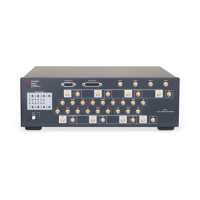
